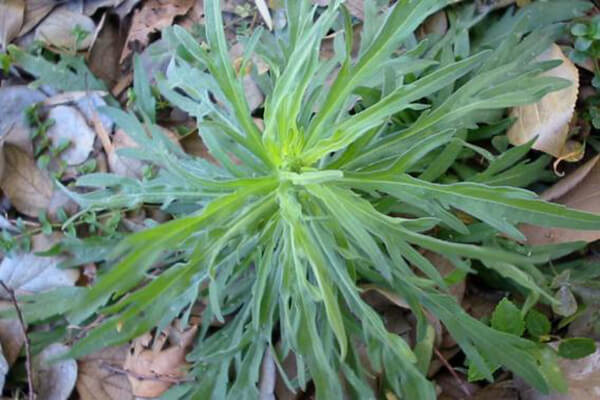
Fleabane
Botanical name: Conyza spp.
Common Names
Also known as: Broadleaf fleabane, broad-leaved fleabane, fleabane, Guernsey fleabane, tall fleabane, Sumatran fleabane, Argentine fleabane, asthma weed, conyza, flax-leaf fleabane, flaxleaf fleabane, flax-leaved fleabane, flax-leaved horseweed, fleabane, hairy fleabane, hairy horseweed, horse-weed, horseweed, little horseweed
Fleabane Weed Description
Tall Fleabane (Conyza sumatrensis): A short-lived herbaceous plant developing a basal rosette of leaves at first. Its upright branched stems are hairy and grow up to 2 m tall. Its lower leaves (4-15 cm long) are elongated in shape with bluntly toothed to deeply lobed margins. Its smaller upper leaves are usually long and narrow with finely toothed or entire margins. Its small flower-heads (5-10 mm across) do not have any obvious 'petals' and turn off-white and fluffy as they mature. Its small 'seeds' (1-2 mm long) are topped with a tuft of pale brown or yellowish hairs about 3 mm long.
Flaxleaf Fleabane: A short-lived herbaceous plant developing a basal rosette of leaves at first. Its upright branched stems are densely hairy and usually grow up to 1 m tall. Its lower leaves (4-10 cm long) are elongated in shape with bluntly toothed to deeply lobed margins. Its smaller upper leaves are usually long and narrow with finely toothed or entire margins. Its small flower-heads (6-12 mm across) do not have any obvious 'petals' and turn whitish and fluffy as they mature. Its small 'seeds' (1.5-2 mm long) are topped with a tuft of whitish-coloured hairs about 3 mm long.
STEM AND LEAVES
Flaxleaf Fleabane: The stems are densely covered in hairs (i.e. hirsute) that give them a greyish appearance. The larger rosette leaves are borne on stalks (i.e. petioles) to 4 cm long. These leaves (4-10 cm long and 1-2 cm wide) are narrowly egg-shaped in outline (i.e. ovate), narrowly oval (i.e. elliptic) or elongated (i.e. lanceolate) with bluntly toothed (i.e. crenate) to deeply lobed (i.e. pinnatifid) margins. Leaves that are produced along the stems are alternately arranged and have shorter stalks, while those towards the tops of the branches are stalkless (i.e. sessile). These uppermost leaves (3-6 cm long and 2-10 mm wide) are smaller and usually more elongated in shape (i.e. linear) with entire margins. All of the greyish-green leaves are hairy (i.e. pubescent) and they are often also somewhat twisted or curled.
Tall Fleabane: The greenish stems are covered in hairs (i.e. hirsute). The larger rosette leaves are borne on stalks (i.e. petioles) to 4 cm long. These leaves (4-15 cm long and 0.5-2.5 cm wide) are narrowly egg-shaped in outline (i.e. ovate), narrowly oval (i.e. elliptic) or elongated (i.e. lanceolate) with bluntly toothed (i.e. crenate) to deeply lobed (i.e. pinnatifid) margins. Leaves that are produced along the stems are alternately arranged and have shorter stalks, while those towards the tops of the branches are more or less stalkless (i.e. sessile or sub-sessile). These uppermost leaves (3-6 cm long and 3-10 mm wide) are smaller and usually more elongated in shape (i.e. linear) with entire margins.
FLOWERS AND FRUITS
Flaxleaf Fleabane: The small flower-heads (i.e. capitula) are borne in leafy clusters towards the tips of the branches (i.e. in racemes or racemose panicles). These flower-heads (6-12 mm across and 5-6 mm long) do not have any obvious 'petals' (i.e. ray florets). They have numerous tiny cream or yellowish coloured flowers (i.e. tubular or disc florets) that are surrounded by a few rows of green bracts (i.e. an involucre). These bracts (5-6 mm long) are long and narrow (i.e. linear or lanceolate), often with purplish-tinged tips. Flowering occurs throughout the year, but mainly from spring through to autumn. As the 'seeds' (i.e. achenes or cypselae) mature, the flower-heads become fluffy, globular in shape, and turn whitish in colour. These tiny oblong 'seeds' (1.5-2 mm long and about 0.5 mm wide) are topped with a tuft (i.e. pappus) of whitish-coloured hairs about 3 mm long.
Tall Fleabane: The small flower-heads (i.e. capitula) are borne in large numbers in leafy clusters (i.e. in racemes or racemose panicles) in the upper one-third of the plant. These flower-heads (5-10 mm across and 4-6 mm long) do not have any obvious 'petals' (i.e. ray florets). They have numerous tiny cream or yellowish coloured flowers (i.e. tubular or disc florets) that are surrounded by a few rows of green bracts (i.e. an involucre). These bracts (4-5 mm long) are long and narrow (i.e. linear or lanceolate). Flowering occurs throughout the year, but mainly from summer through to winter. As the 'seeds' (i.e. achenes or cypselae) mature, the flower-heads become fluffy, globular in shape, and turn pale brown or off-white in colour. These tiny oblong 'seeds' (1-2 mm long and about 0.5 mm wide) are topped with a tuft (i.e. pappus) of straw-coloured or off-white hairs about 3 mm long.
REPRODUCTION AND DISPERSAL
This species reproduces by seed only.
Reference: https://weeds.brisbane.qld.gov.au/
